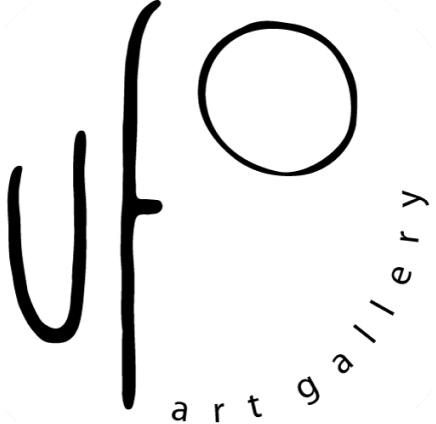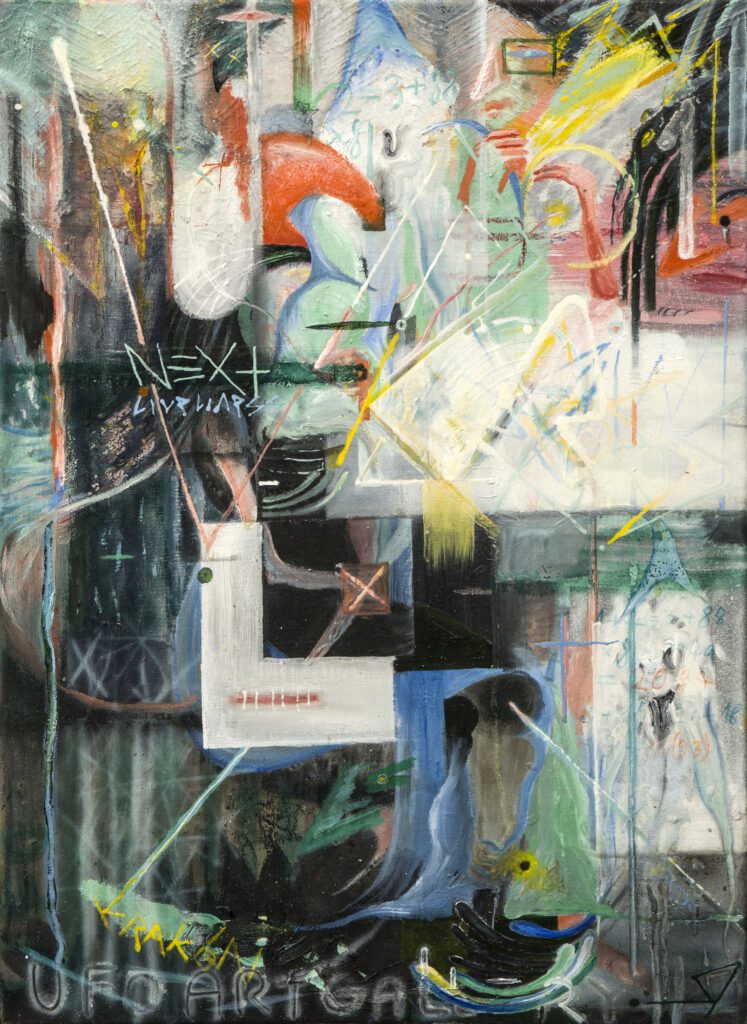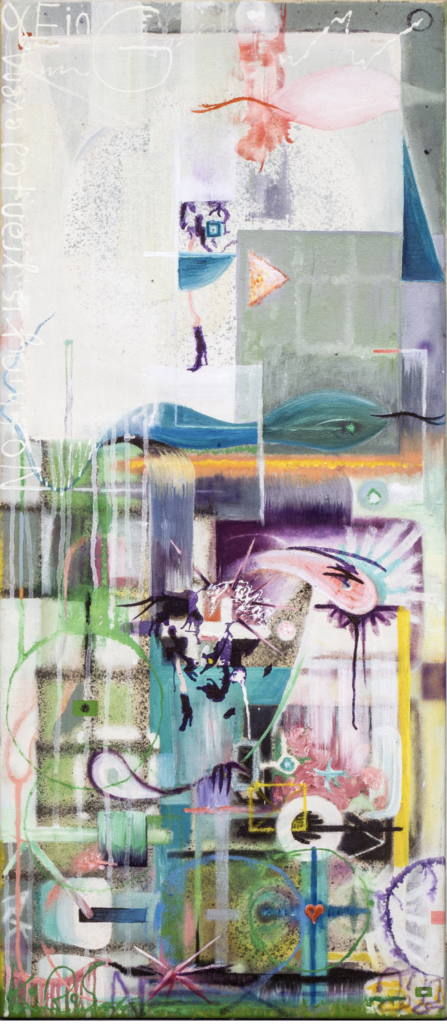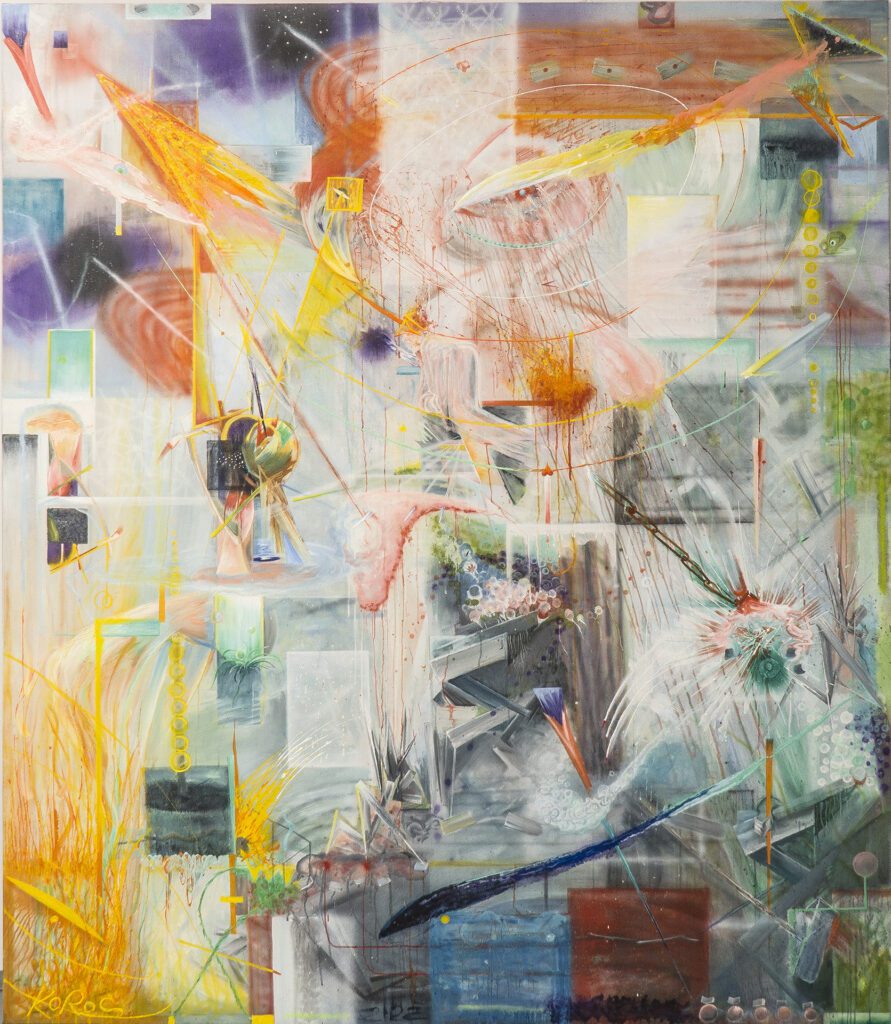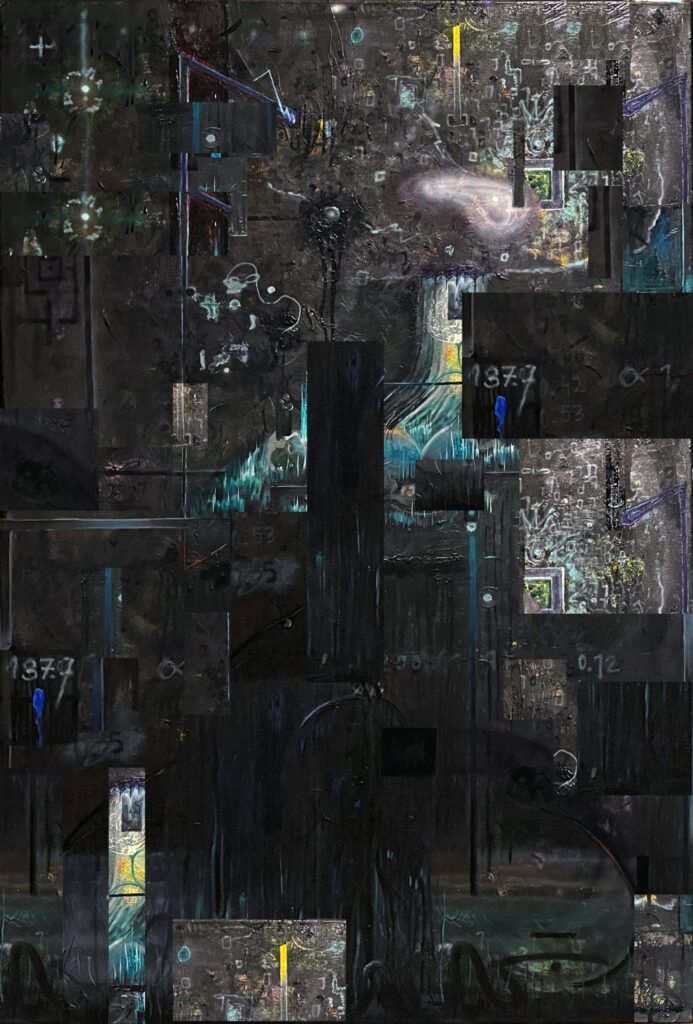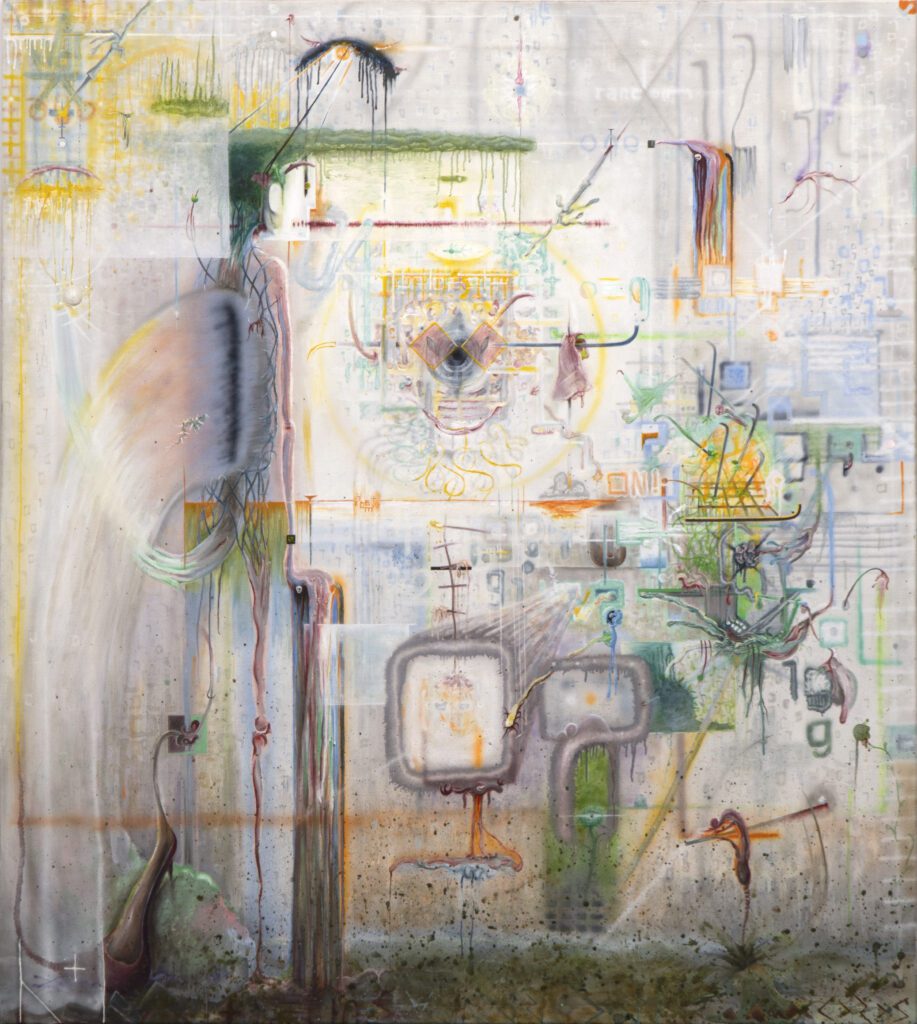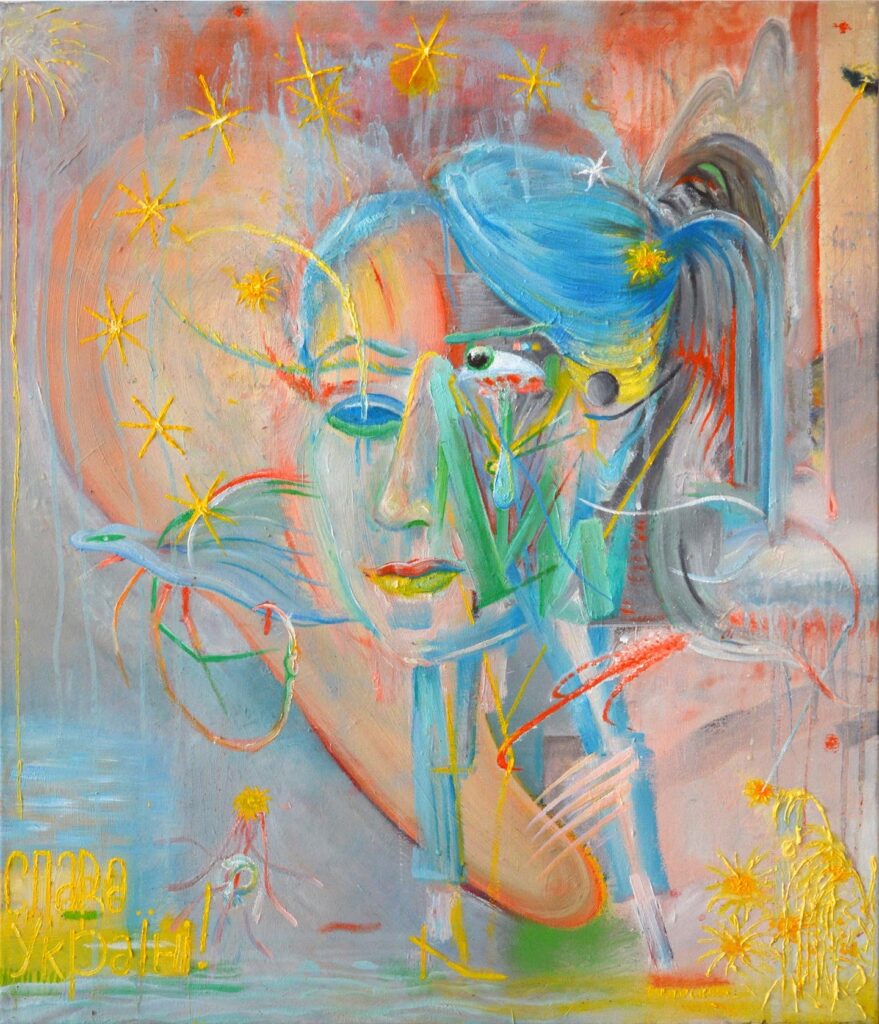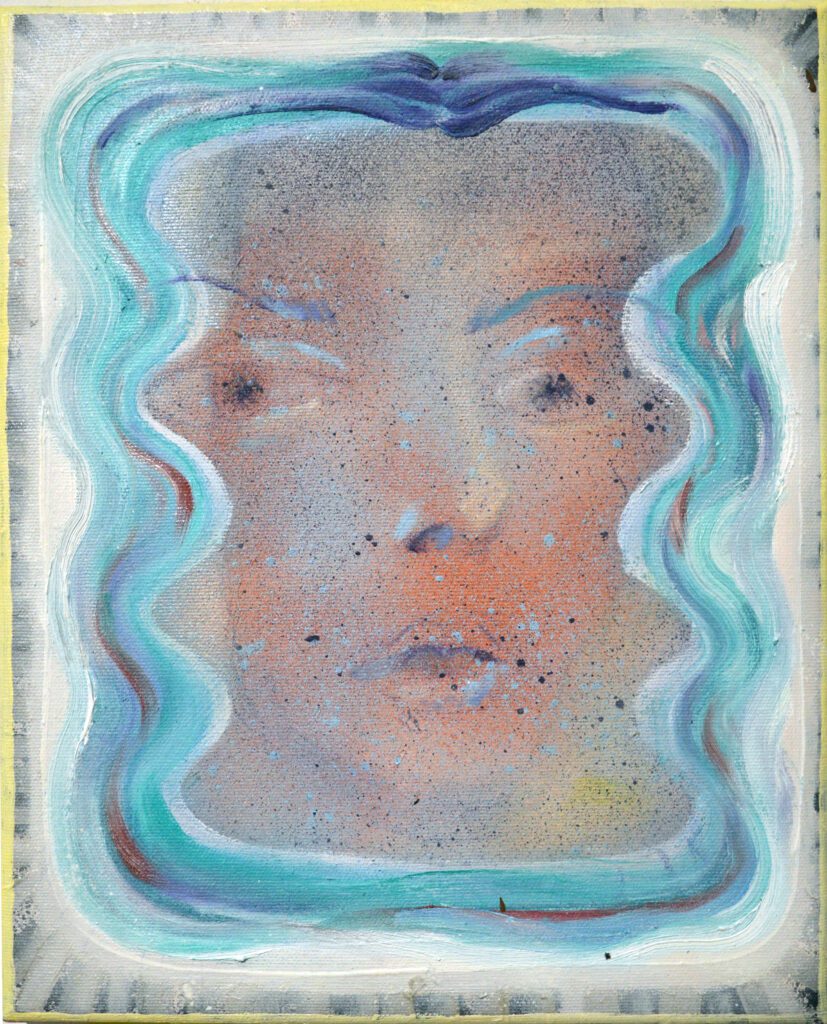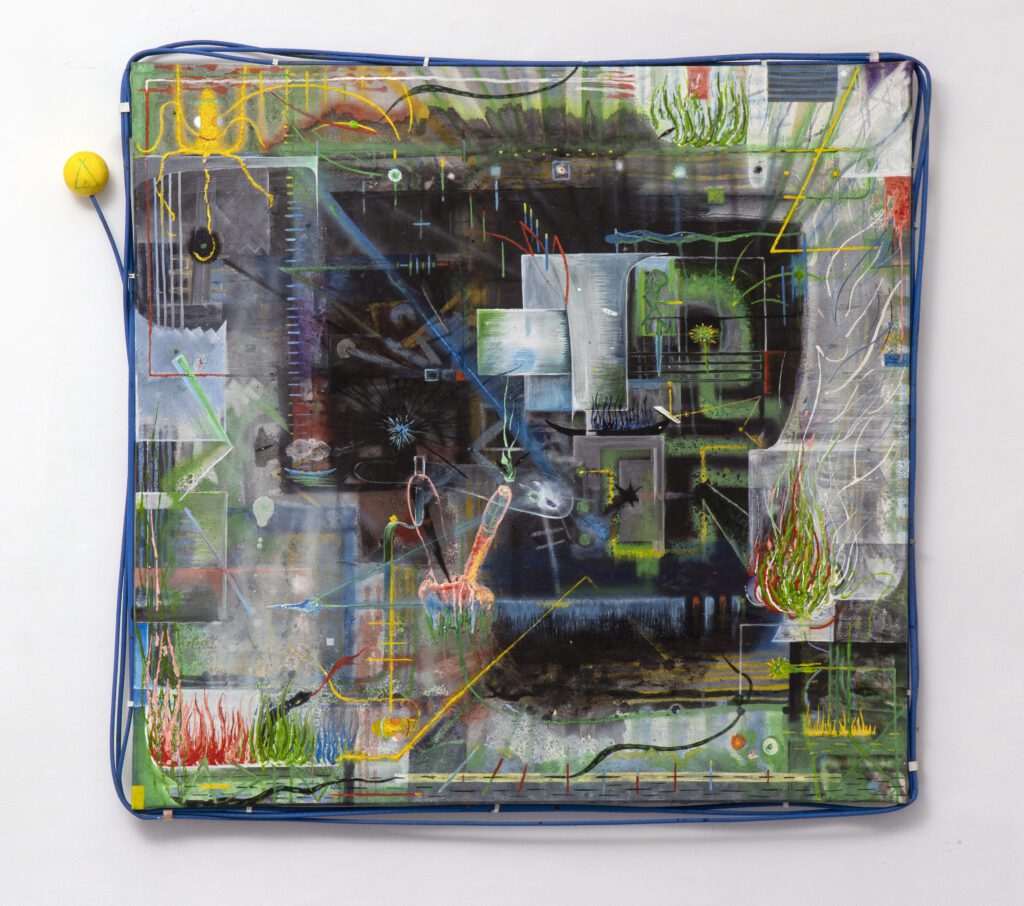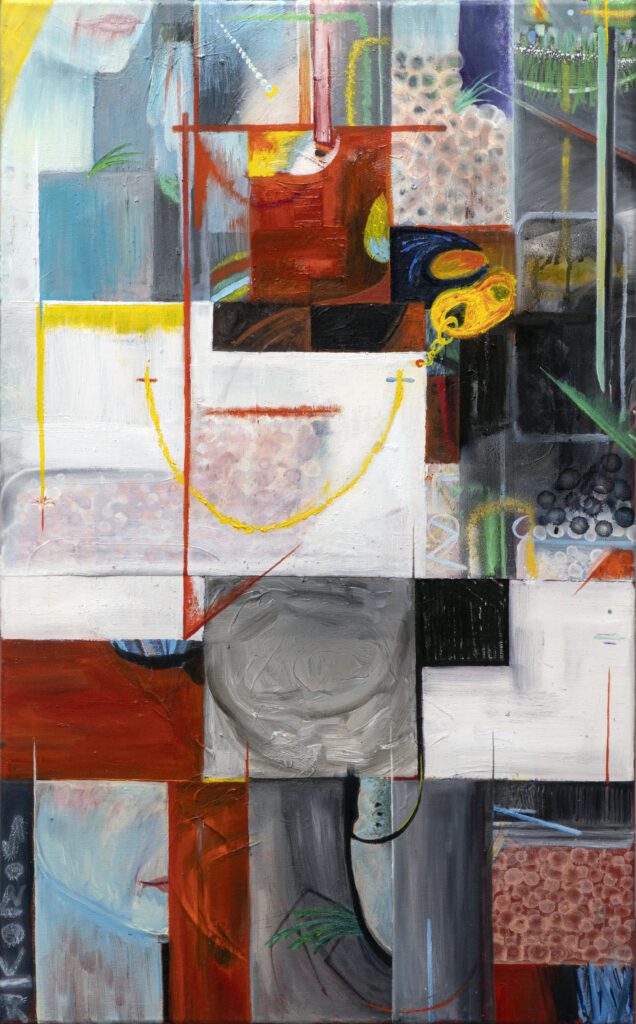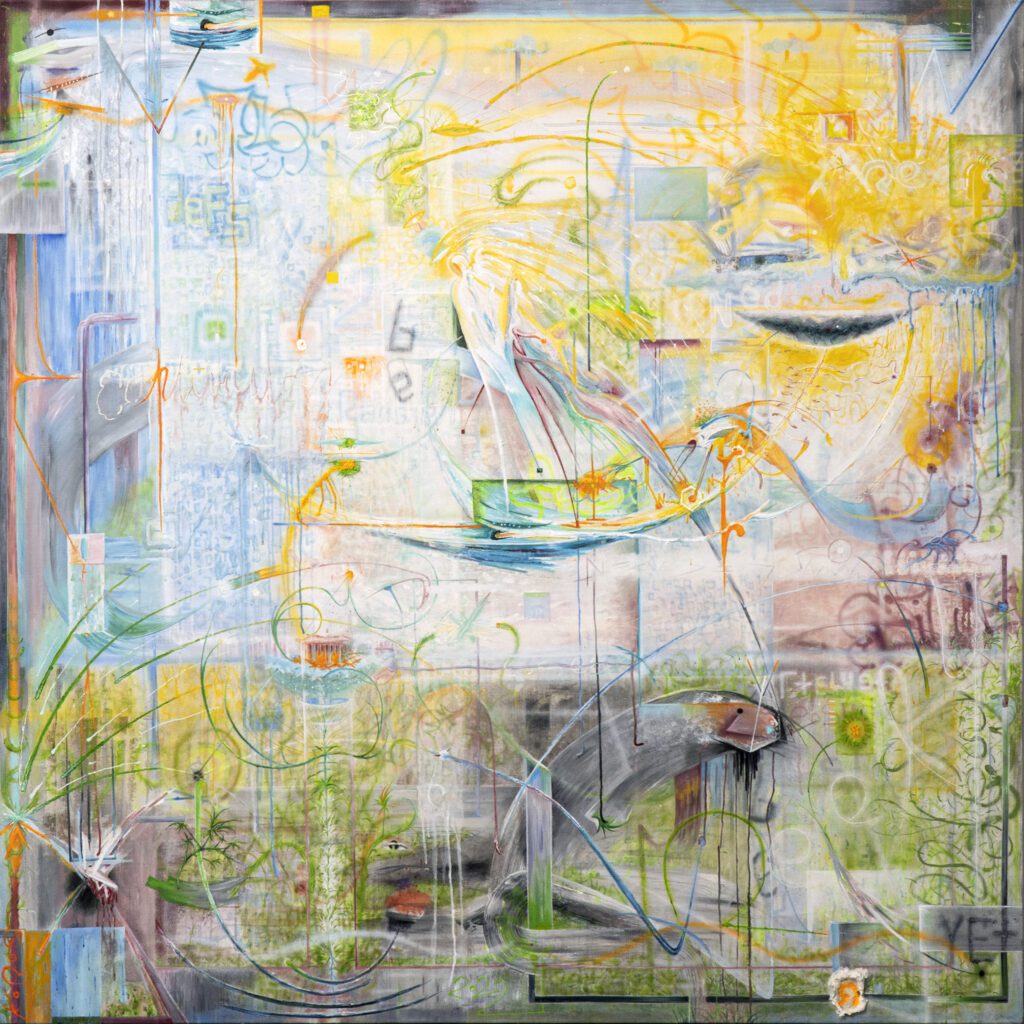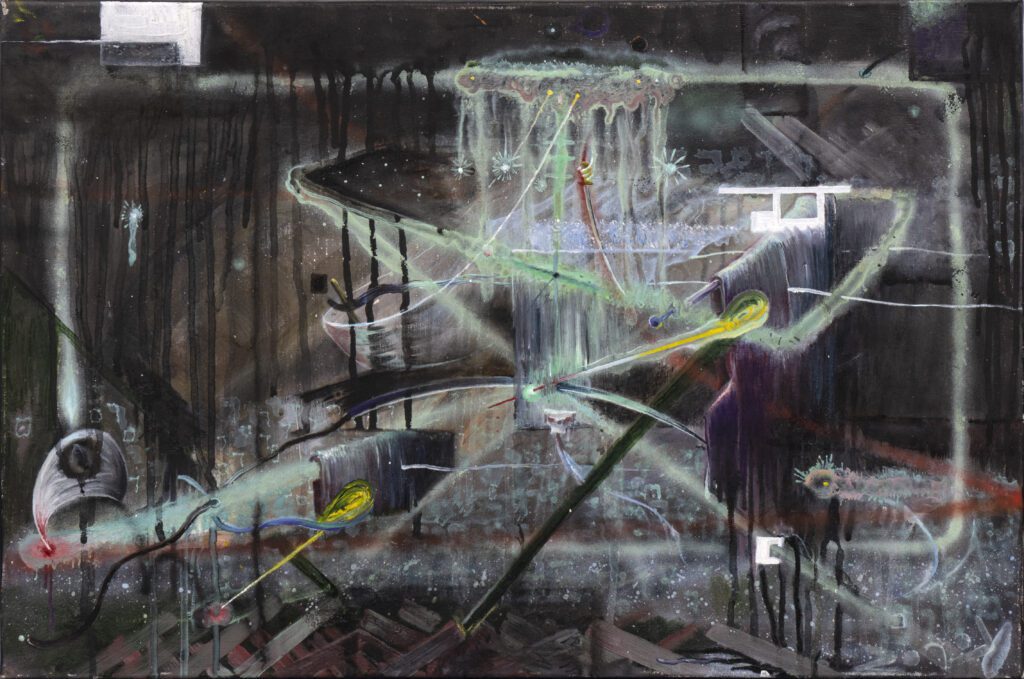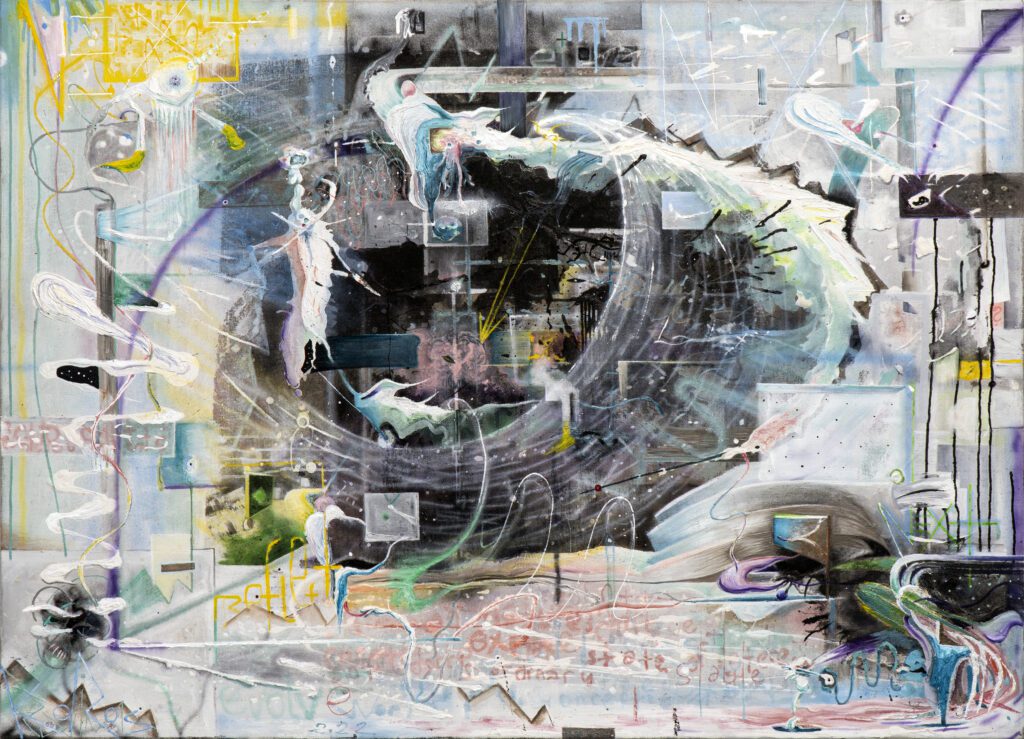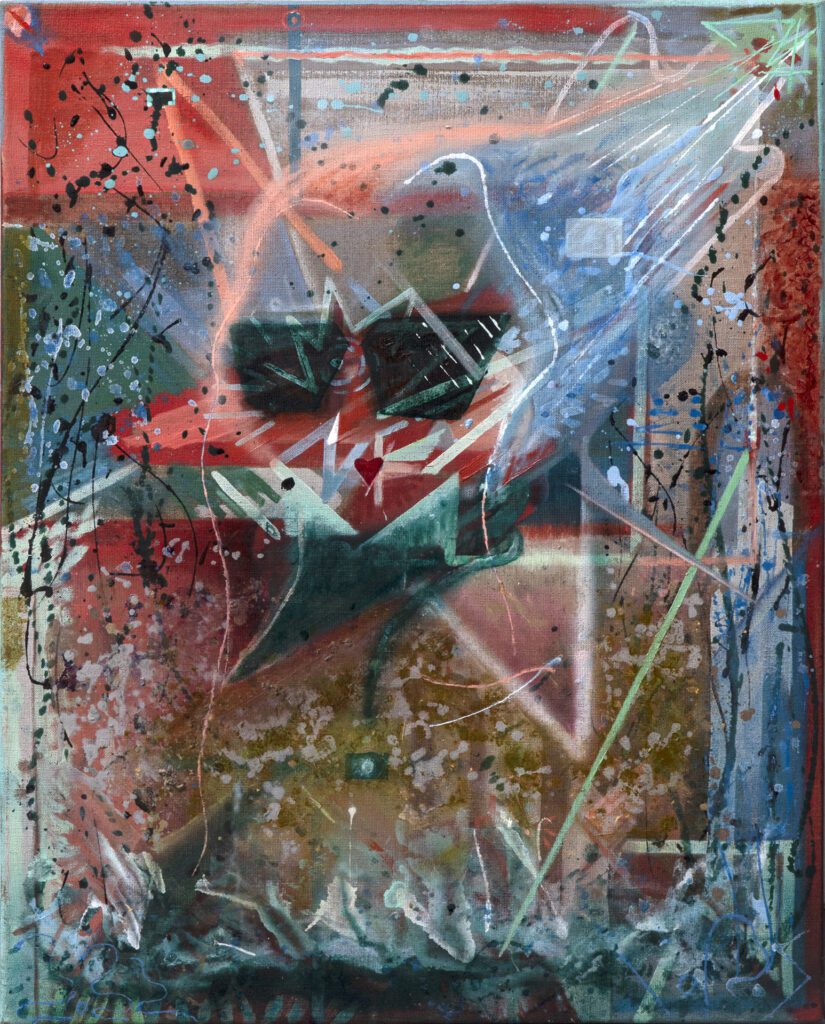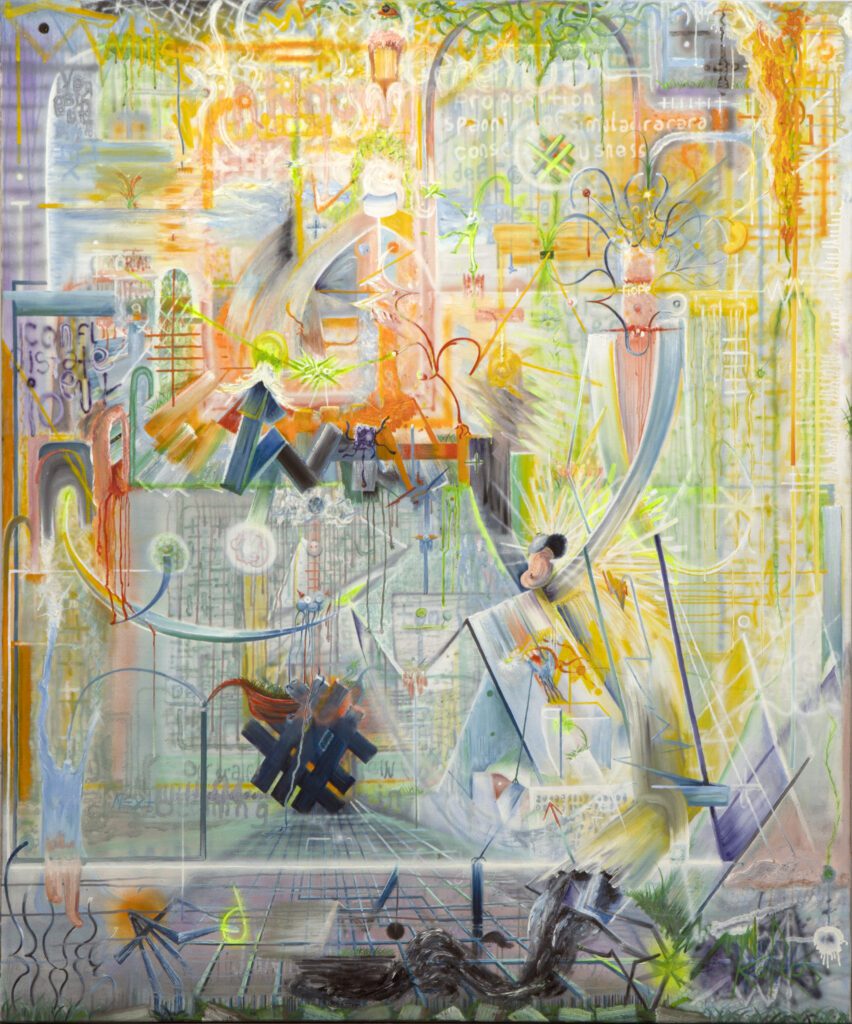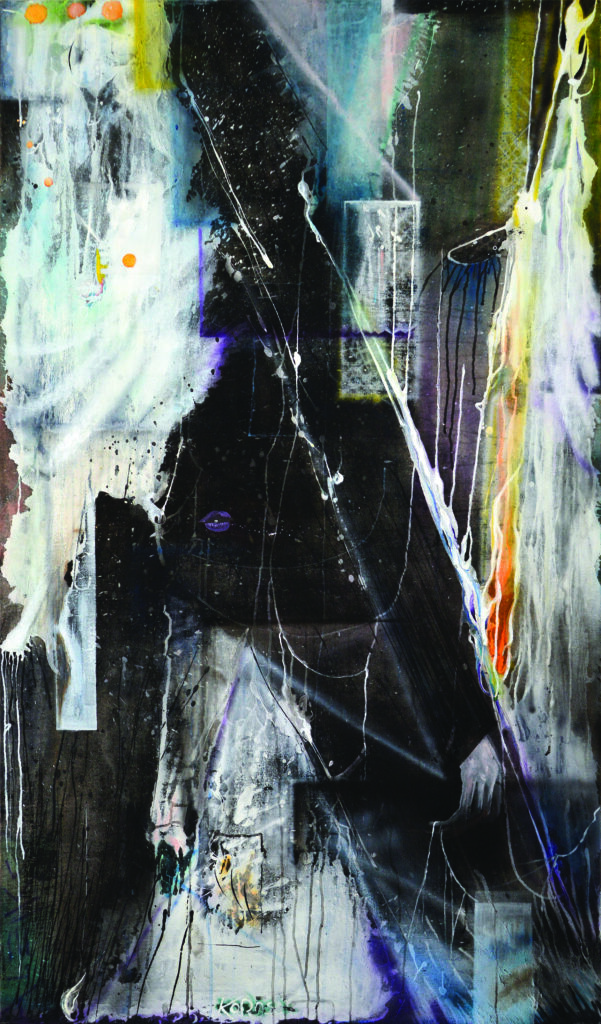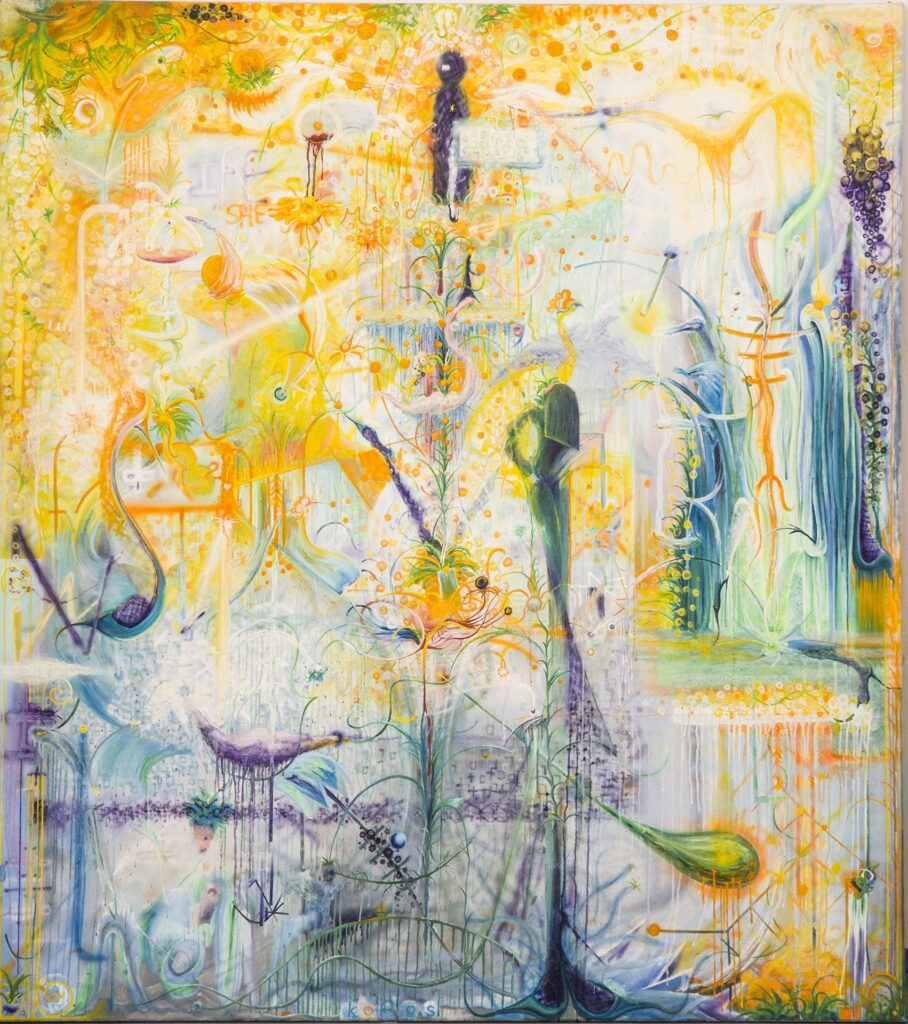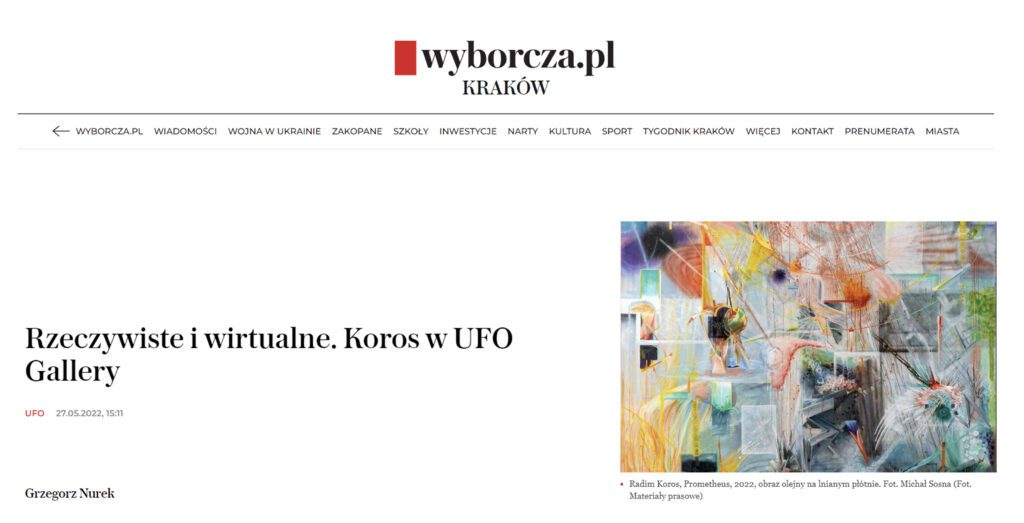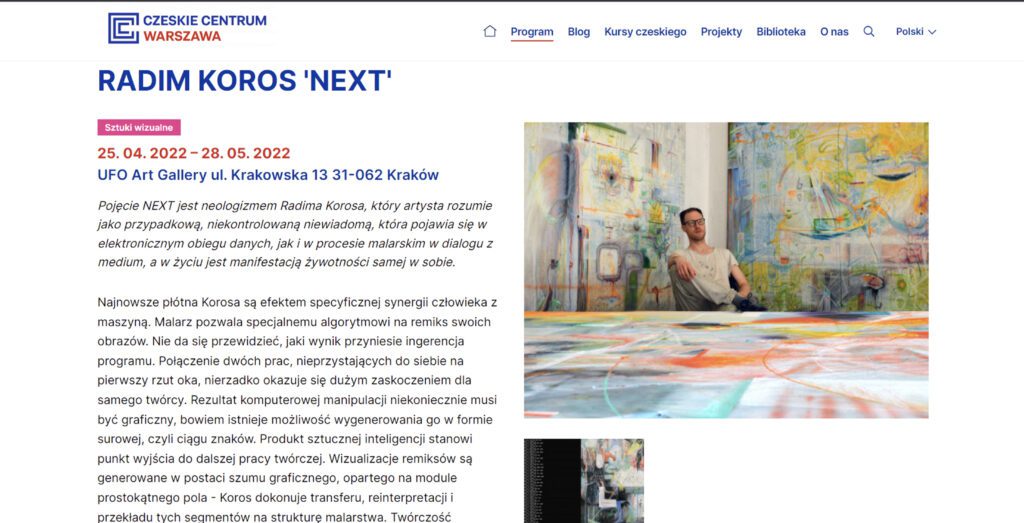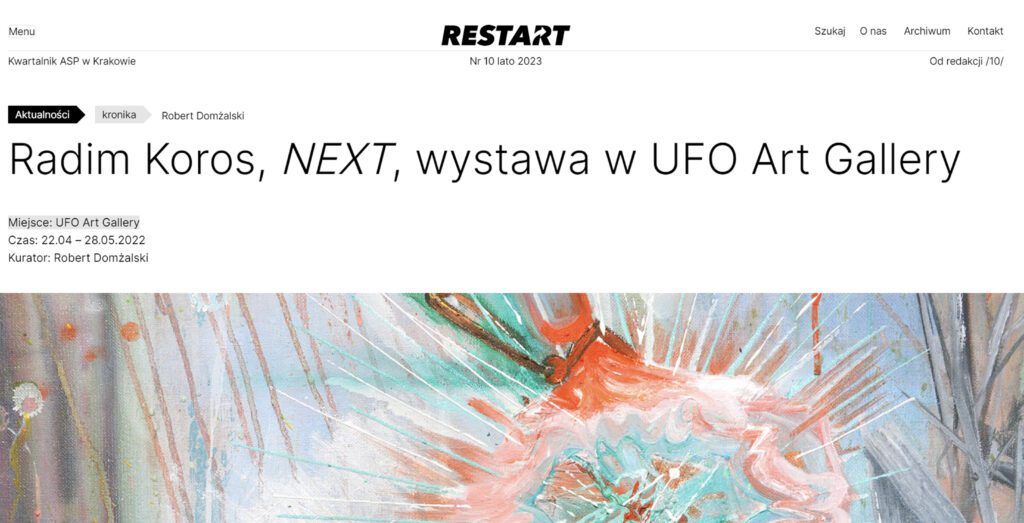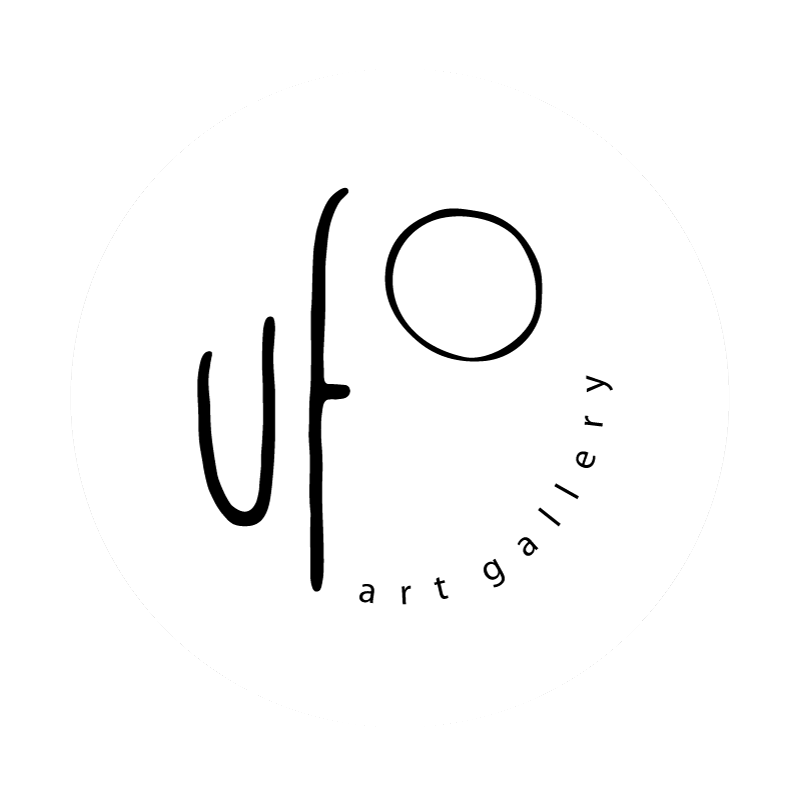Koros’ newest canvases are the result of a specific synergy between man and machine. The painter allows a special algorithm to remix his paintings. It is impossible to predict what the result of program interference will be. The combination of of involved elements that seems chaotic at first glance often turns out to be a big surprise for the creator himself. The result of computer manipulation does not have to be graphic, because it can be generated in a raw form, i.e. a sequence of characters. The product of artificial intelligence is the starting point for further creative work. The visualizations of the remixes are generated in the form of graphic noise, based on the rectangular field module – Koros transfers, reinterprets and translates these segments into the structure of the painting. Creativity created in this way is an ideal exemplum of viractuality, a concept by Joseph Nechvatal presented in “Immersive Ideals / Critical Distances. A Study of the Affinity Between Artistic Ideologies Based in Virtual Reality and Previous Immersive Idioms”, according to which the interpenetration of real and virtual worlds is like this strong that a person ceases to notice the difference between them. Taken from the artist’s vocabulary, NEXT is a catch that brings out in viractuality the moment where AI seems to “think” and life “glitters”.
NEXT is an affirmation of progress and creating a positive vision of the world. Koros’ canvases pulsate with internal dynamics, are full of energy and unrestrained vigor; each of them is capable of being transformed, even if it has already been exhibited. The painting “Untitled Yet”, previously presented as part of the “Enlightenment” exhibition, and at the same time being the starting point for the construction of the new exhibition, has changed so far that it was awarded the title – “Captivating Freely”. Indeed, it captivates with its bright colors and subtlety of non-obvious shapes. NEXT manifestations draw attention to oneself; it’s hard to look away from them. Koros’s painting is both a vision of the future and an archeology of ancient mythology. With “1984+” a figure deprived of will “stares” at us, and “Moloch” scares us with its incomprehensible complexity of repeating sequences of numbers among black planes. The images are emotionally balanced by “Alex”, the angel-protector of people, and “Prometheus”, the supplier of progress, the savior who fought against tyranny. Koros, portraying the suffering titan, recalled the lesson of old masters such as Titian, Peter Paul Rubens and Gustave Moreau that artistic talent is the Promethean fire. In the context of the NEXT exhibition, “Prometheus” provokes the question of whether talent remains only a human domain. Since the program can suggest solutions that a professional painter deems good enough to be transferred onto a canvas, maybe artificial intelligence can also be considered talented? Koros’ artistic practice suggests that you should trust the machine, allow it to suggest the next step. Paradoxically, technology can motivate us to become better people. After all, reality is no more. It is “viractuality”. However, also in “viractuality” random information can appear, disruption of the system, which is a manifestation of life.
Robert Domżalski
